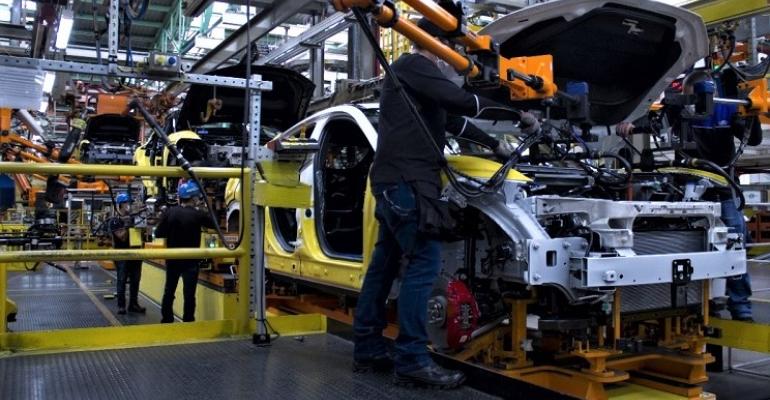One month after acknowledging a 100,000-unit shortfall in fourth-quarter 2022 volume largely because of the microchip shortage, Ford announces it is increasing production of six models, including its three battery-electric vehicles.
Ford says it began increasing production last week at the Cuautitlán, Mexico, plant that assembles the Mustang Mach-E BEV. “Changes at the plant will allow Ford to nearly double its hourly production and bring its annual manufacturing run rate to a targeted 210,000 units by year's end,” the automaker says in a news release.
The Cuautitlán plant was idle throughout January while preparations for the production increase were being made.
Production of another BEV, the F-150 Lightning, is on track to triple this year, to an annual production run rate of 150,000, Ford says. Production at the Rouge Electric Vehicle Center is to resume March 13. Ford is investing $2 billion across three plants in Michigan and adding 3,200 union jobs to handle the increase in Lightning output.
Ford is targeting an annual production increase of 38,000 units of the Transit gasoline van and battery-electric E-Transit van (pictured, below). The increase will be aided by the addition of a third shift at the Kansas City (MO) Assembly Plant in April. Ford says it is investing $95 million and adding 1,100 union jobs as part of the production boost.

The automaker says Bronco Sport and Maverick production is targeted to increase by more than 80,000 units this year, helping to meet demand in both North and South America.
Ford also says it is “studying ways to boost output” of gasoline and hybrid models of the F-150 pickup at its Dearborn Truck Plant.
A company spokesman did not return email inquiries from Wards about whether Ford has adequate supplies of microchips to support the production increases.
In reporting its fourth-quarter 2022 financial results on Feb. 2, Ford acknowledged a 100,000-vehicle volume deficit in Q4 alone, primarily because of the microchip shortage.
John Lawler, Ford’s chief financial officer, said at the time: “We’re going to see that there will still be volatility surrounding chips in 2023. I know there has been a lot of debate about ‘Well, the chip supply issue is over,’ but there are still capacity issues on the larger, older nodes, which are essentially the chips we use in the auto sector.”
Ford said it had about 40,000 unfinished vehicles sitting in parking lots and waiting for microchips, according to a November report on the autoevolution.com website.





